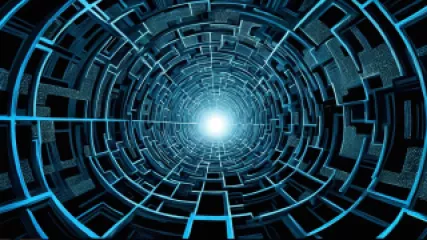Unlocking Cognitive Insights: Lessons from "Inception" on Beating Biases
Unlocking Cognitive Insights: Lessons from "Inception" on Beating Biases
Escaping the Web of Cognitive Biases
In the captivating science-fiction thriller "Inception," director Christopher Nolan takes us on a mind-bending journey through the depths of the human psyche. The film explores the concept of "inception" – the ability to implant an idea in someone's subconscious, effectively altering their perception of reality. As we follow the protagonist, Dom Cobb, and his team of dream extractors, we're confronted with the complexities of human cognition and the power of our own biases to shape our understanding of the world.
In many ways, "Inception" serves as a metaphor for the cognitive biases that permeate our daily lives, shaping our decisions, beliefs, and actions without our conscious awareness. Just as the characters in the film struggle to navigate the treacherous landscape of the subconscious, we too must learn to navigate the intricate web of biases that can lead us astray.
Unraveling the Mysteries of Cognitive Biases
Cognitive biases are systematic patterns of deviation from rationality in judgment and decision-making, often rooted in the way our brains process information. These biases can profoundly impact our perceptions, memories, and choices, leading us to make suboptimal or even irrational decisions. Understanding the nature of these biases and how they operate is crucial if we hope to overcome their influence and gain a more accurate understanding of reality.
One of the most well-known cognitive biases is the confirmation bias, which drives us to seek out and interpret information in a way that confirms our pre-existing beliefs and assumptions. This bias is particularly insidious, as it can lead us to dismiss or discount evidence that contradicts our established views, effectively trapping us in a mental echo chamber. Much like the team in "Inception" who must navigate the treacherous landscape of the subconscious, we must learn to recognize and overcome our own confirmation biases if we hope to make truly rational decisions.
Another prevalent bias is the anchoring effect, which causes us to rely too heavily on the first piece of information we receive when making decisions. This can lead us to make suboptimal choices, as we may fail to consider alternative options or perspectives. In "Inception," we see this bias at play as the characters struggle to separate the dream world from reality, often clinging to the first information they receive as a way to orient themselves.
The availability heuristic is another cognitive bias that can heavily influence our decision-making. This bias causes us to make judgments based on the information that is most readily available to us, rather than considering the full range of relevant data. In the context of "Inception," we see this bias at work as the characters rely on their own personal experiences and memories to navigate the dream worlds, rather than considering the broader context or the potential for deception.
These are just a few examples of the cognitive biases that can lead us astray. From the sunk cost fallacy to the halo effect, our minds are constantly playing tricks on us, shaping our perceptions and decisions in ways that may not align with reality. Understanding these biases and learning to recognize them in our own thought processes is the first step towards overcoming their influence and making more rational, well-informed choices.
Lessons from "Inception" on Combating Cognitive Biases
As we delve deeper into the world of "Inception," we can find valuable lessons on how to combat the cognitive biases that so often hold us back. Here are some key insights we can glean from the film:
1. Cultivate Metacognition
In the film, the characters must constantly question the nature of their reality, constantly asking themselves, "Am I still dreaming?" This practice of metacognition, or thinking about one's own thought processes, is crucial for overcoming cognitive biases. By actively examining our assumptions, beliefs, and decision-making strategies, we can begin to identify the biases that are influencing our perceptions and choices.
Just as the characters in "Inception" use totems to help them distinguish between dream and reality, we can develop our own mental tools to help us stay grounded in the present moment and avoid the pitfalls of cognitive biases. This might involve regularly reflecting on our thought patterns, seeking out alternative perspectives, or engaging in thought experiments to challenge our assumptions.
2. Embrace Diverse Perspectives
In the film, Cobb's team is composed of individuals with a wide range of expertise and backgrounds, each bringing a unique perspective to the task at hand. This diversity of thought is essential for counteracting the tendency towards confirmation bias and other cognitive biases.
By surrounding ourselves with people who challenge our assumptions and offer different viewpoints, we can push ourselves to consider alternatives and avoid the trap of cognitive tunnel vision. This might involve actively seeking out contrarian opinions, engaging in constructive debates, or cultivating relationships with individuals from diverse backgrounds and experiences.
3. Develop a Growth Mindset
The characters in "Inception" must constantly adapt to the ever-changing landscape of the dream worlds, learning to navigate new challenges and overcome unexpected obstacles. This ability to embrace change and continually expand their knowledge and skills is a key factor in their success.
Adopting a similar growth mindset in our own lives can help us overcome the cognitive biases that can limit our potential. By viewing setbacks and failures as opportunities for learning and growth, rather than as threats to our self-image, we can become more resilient and adaptable in the face of cognitive biases.
4. Leverage External Aids
In the film, the characters rely on a variety of technological tools and devices to help them navigate the dream worlds, from specialized PASIV machines to holographic projections. These external aids serve as a means of overcoming the limitations of their own cognition, providing them with additional information and perspectives.
Similarly, in our own lives, we can leverage various tools and techniques to help us mitigate the effects of cognitive biases. This might include using decision-making frameworks, employing data visualization techniques, or seeking the advice of experts and specialists. By incorporating these external aids into our thought processes, we can enhance our ability to make more informed and rational decisions.
5. Cultivate Emotional Awareness
Throughout "Inception," the characters' emotions – particularly their fears, regrets, and attachments – play a significant role in shaping their perceptions and decision-making. Understanding and managing these emotional influences is critical for overcoming cognitive biases.
By developing a deeper awareness of our own emotional states and how they impact our thought processes, we can learn to identify and mitigate the biases that arise from our emotional responses. This might involve practices such as mindfulness meditation, emotional regulation techniques, or seeking the guidance of mental health professionals.
Embracing the Challenge of Cognitive Biases
As we've seen, the lessons we can learn from "Inception" about cognitive biases are both profound and practical. By cultivating metacognition, embracing diverse perspectives, developing a growth mindset, leveraging external aids, and cultivating emotional awareness, we can begin to unlock the true power of our cognition and make more rational, well-informed decisions.
The journey towards overcoming cognitive biases may not be an easy one, but it is a crucial step in our quest for greater understanding and self-improvement. Just as the characters in "Inception" must confront the complexities of the subconscious mind, we too must be willing to confront the biases that shape our perceptions and choices.
By embracing this challenge, we can not only become more effective problem-solvers and decision-makers, but we can also deepen our understanding of the human mind and our place in the world. After all, the true power of the mind lies not in its ability to create elaborate dream worlds, but in its capacity to transcend the limitations of our own biases and perceptions.
Conclusion: Unlocking the Full Potential of the Mind
As we bid farewell to the dreamlike world of "Inception," we are left with a renewed appreciation for the complexities of human cognition and the importance of understanding and overcoming the cognitive biases that can so profoundly shape our lives.
By applying the lessons we've learned from the film – by cultivating metacognition, embracing diverse perspectives, developing a growth mindset, leveraging external aids, and cultivating emotional awareness – we can begin to unlock the full potential of our minds and make more rational, well-informed decisions.
The journey ahead may be challenging, but it is one that holds the promise of greater self-awareness, improved psychological well-being, and a deeper understanding of the world around us. So let us venture forth, armed with the insights of "Inception" and the determination to confront our own cognitive biases, ever-striving to perceive the world as it truly is, rather than as our biases would have us believe.






